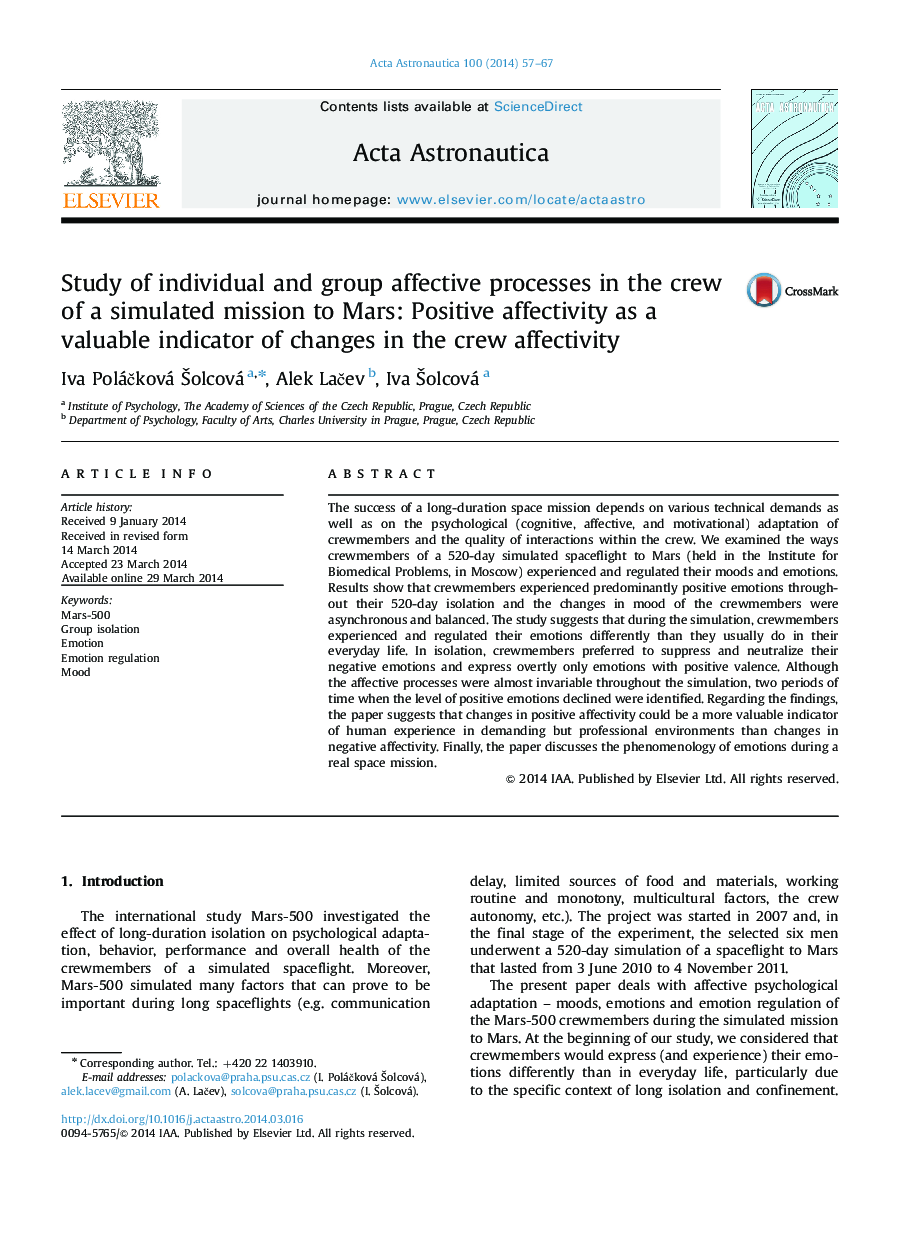| Article ID | Journal | Published Year | Pages | File Type |
|---|---|---|---|---|
| 1714539 | Acta Astronautica | 2014 | 11 Pages |
•We dealt with affectivity of the Mars-500 crewmembers.•The Mars-500 crew experienced largely positive emotions and moods.•Changes in crewmembers’ moods were asynchronous and balanced during the simulation.•Synchronization occurred as late as the final part of the simulation.•Positive affectivity was a valuable indicator of affectivity changes in the crew.
The success of a long-duration space mission depends on various technical demands as well as on the psychological (cognitive, affective, and motivational) adaptation of crewmembers and the quality of interactions within the crew. We examined the ways crewmembers of a 520-day simulated spaceflight to Mars (held in the Institute for Biomedical Problems, in Moscow) experienced and regulated their moods and emotions. Results show that crewmembers experienced predominantly positive emotions throughout their 520-day isolation and the changes in mood of the crewmembers were asynchronous and balanced. The study suggests that during the simulation, crewmembers experienced and regulated their emotions differently than they usually do in their everyday life. In isolation, crewmembers preferred to suppress and neutralize their negative emotions and express overtly only emotions with positive valence. Although the affective processes were almost invariable throughout the simulation, two periods of time when the level of positive emotions declined were identified. Regarding the findings, the paper suggests that changes in positive affectivity could be a more valuable indicator of human experience in demanding but professional environments than changes in negative affectivity. Finally, the paper discusses the phenomenology of emotions during a real space mission.
